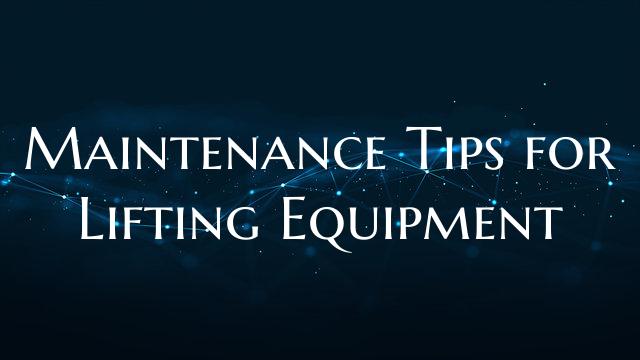Maintenance Tips for Lifting Equipment
Introduction: Lifting equipment is essential in various industries for safely handling heavy loads. To ensure the longevity and efficiency of your lifting equipment, regular maintenance is key. Here are some valuable maintenance tips that can help you keep your lifting equipment in optimal condition.
1. Regular Inspections: Performing regular inspections on your lifting equipment is crucial to identify any potential issues early on. Inspect the equipment for signs of wear and tear, corrosion, cracks, or any other damage that may affect its performance. Make sure to follow the manufacturer's guidelines for inspection frequency and procedures.
2. Lubrication: Proper lubrication is vital for the smooth operation of lifting equipment. Be sure to use the recommended lubricants and follow the manufacturer's guidelines on lubrication intervals. Over-lubrication can be as harmful as under-lubrication, so be mindful of the right amount to apply.
3. Training and Certification: Ensure that operators are properly trained and certified to use the lifting equipment. Proper training not only enhances safety but also helps in maintaining the equipment properly. Operators should be aware of the equipment's capabilities, limitations, and proper operating procedures.
4. Storage: Proper storage of lifting equipment is essential to prevent damage and ensure longevity. Store the equipment in a clean, dry environment away from harsh elements such as moisture and extreme temperatures. Use covers or protective cases when the equipment is not in use to prevent dust buildup.
5. Load Capacity: Always adhere to the recommended load capacity of the lifting equipment. Overloading can cause significant damage to the equipment and compromise safety. Make sure operators understand the importance of following load capacity guidelines to prevent accidents and equipment failure.
6. Keep Detailed Records: Maintain detailed records of maintenance activities, inspections, repairs, and any modifications made to the lifting equipment. This documentation can help track the equipment's performance over time, identify recurring issues, and determine if any upgrades or replacements are necessary.
7. Emergency Response Plan: Develop an emergency response plan that outlines the steps to take in case of equipment failure or accidents. Ensure that all operators are familiar with the plan and know how to respond quickly and effectively in emergency situations.
Conclusion: Proper maintenance of lifting equipment is essential for ensuring safety, prolonging the equipment's lifespan, and maintaining efficient operations. By following these maintenance tips and staying proactive in caring for your lifting equipment, you can avoid costly repairs, prevent accidents, and maximize the performance of your equipment.

